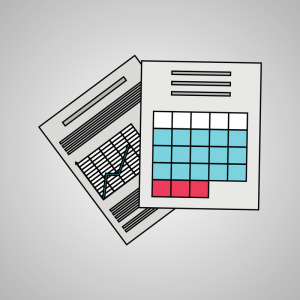
What is your strategy for the aftermath of a terrible storm or aggressive ransomware attack? Likely, you have insurance on your building and your physical belongings like desks and computers and the coffee maker. But what about your data? What about the information stored on your server? Believe it or not, while the server itself may be covered by your insurance policy, everything it contains within its drives is not. For that, you need cyber insurance, which we do recommend, but even that won’t help you recover lost data that you need to run your business. While a cyber insurance policy may provide a much-needed payout, it won’t magically bring back all of those vital files, information, and software you need to run to your business every day.
We briefly discussed a disaster recovery plan in our blog about business continuity. Both are essential parts of business planning, but disaster recovery is the meat and potatoes of your Business Continuity Plan.
Life is unpredictable. Business is, too. The more you can control about the future of your business, the better off you’ll be in the long run. This is where disaster recovery comes in. Disaster could occur at any time. Whether it’s a fire, a break-in, a storm, or even a disgruntled employee. By putting forth a plan for disaster and the recovery process after the fact, you will be far better off. In fact, disaster recovery is becoming required by more and more business insurance policies. With technology growing so steadily, you should expect your insurance company to demand a written disaster recovery plan sooner rather than later.
Here’s what you need to include:
- A general prevention audit. What are the key assets that need protecting? What are the potential impacts on your business if these assets are compromised? List the ways in which these assets are protected and audited regularly for safety.
- Your recovery team. In this section, you should outline the management team roles during and after a disaster. Perhaps the CEO calls the insurance company while the VP calls to check on the staff. Make sure these people are trained to know their roles and tasks during a disaster. They will need to know when and how to implement the recovery plan.
- Emergency response. In this section, you will outline which kinds of events require a recovery plan. While a white-out blizzard that’s citywide may be a triggering event, a small fire in the break room may not. List an overview of what you consider a disaster, and which recovery plan your team should execute.
- Communication plan. It’s best to establish a kind of phone tree for disasters. Nominate a person (and a backup person) in each area of your business who is in charge of reaching out to a specific set of employees. This plan should include a basic safety check on your team members and their neighbors (if applicable) as well as plans for returning to work. Perhaps the office is flooded so employees are asked to work from home. Perhaps the city undergoes a massive natural disaster and some employees need a place to regroup and recover. It’s a good idea to include in this section your communication to the media (or on social media). Which disasters require communication with your clients?
- Recovery strategies. Finally, you should include a section on recovery. What needs to be implemented in order for your business to recover from a large fire? Where, if necessary, is your alternate workplace? Make sure to include the number of any vendors you need to notify in order to begin the recovery process. This would include your insurance company, your internet service provider, your IT support, and possibly even your phone provider. While your ISP works towards reestablishing internet in your office, your IT support can assist with your business continuity device to make sure that your clients won’t notice a dip in service.
It’s important to update this document as often as you can. Anytime you change assets, hire new management, expand your building, etc. make sure you revise your disaster recovery plan.
Having a business continuity device as part of your disaster recovery plan is of vital importance. This device can spin up your business (your files, your data, your software, anything, and everything) in the cloud so that you can function as close to normal as possible during a disaster. Your employees will be able to work out of this digital space until your physical one is ready again. Your clients shouldn’t even notice a difference.
How does your disaster recovery plan stand up to the industry average? Would you like a free business continuity device? Our Done-For-You Disaster Recovery will give you complete peace of mind that you can be back up and running fast in the event of a major data disaster.



